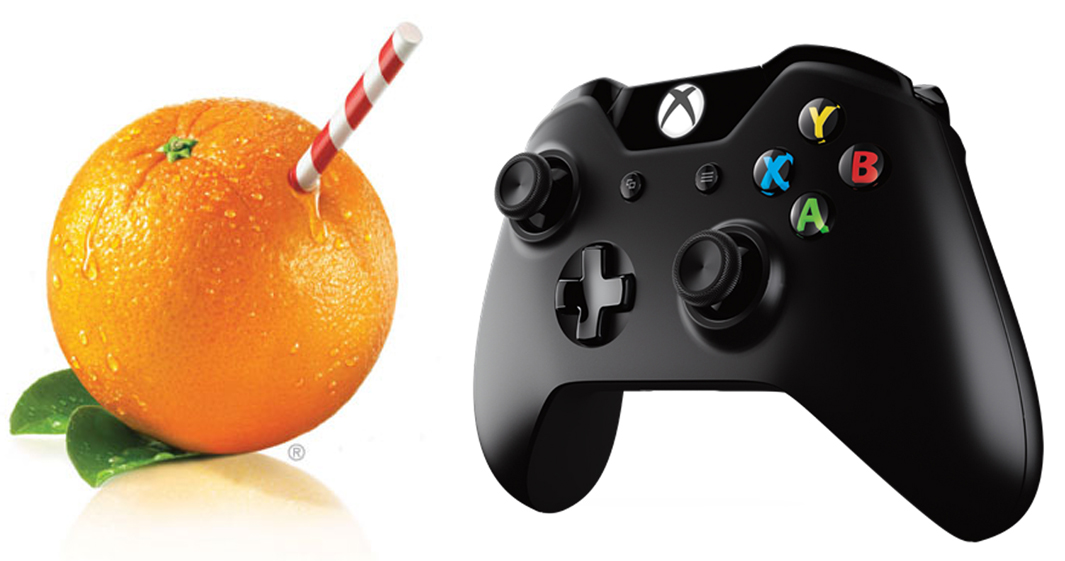A lot of people got very upset about orange juice in the winter of 2009.
Over a two week span, PepsiCo’s Tropicana OJ experienced a glaring 20 percent sales drop. Customers suddenly stopped buying America’s most popular orange juice brand in droves, fleeing instead to Coca-Cola’s Minute Maid. The citrus-exodus wasn’t due to an ebola scare or a change in the basic chemistry of the juice. The juice itself hadn’t changed. Same 100 percent Orange Juice, never from concentrate.
The problem was, the box looked different. PepsiCo decided that the All-American “orange with a straw in it” iconography traditionally gracing Tropicana’s packaging needed to “evolve” into the 21st century. So, PepsiCo hired Peter Arnell, arguably the most 21st century slapdash post-modernist the branding world had to offer. Arnell had led the Pepsi Cola rebrand in 2008, now infamous for the 27 page leaked memo that explained the new logo’s basis in everything from global magnetic dynamics, the theory of relativity, and the work of Leonardo Da Vinci.
When he moved on to rebranding the orange juice, he got rid of the “orange with a straw in it,” and instead put a cup the juice itself on the box. The vaguely medical sterility of the design paired with the cup full of yellowish liquid on the front prompted loyal Tropicana customers to liken it to a “urine sample.” The new design was “ugly,” and “generic,” according to the tidal wave of backlash. The sudden sales drop shocked Tropicana, which went on record saying “We underestimated the deep emotional bond” that customers had with the original packaging.
“Those consumers are very important to us, so we responded.”
Two weeks after the design went out, Tropicana recalled it. And just like that, customers had their “orange with a straw” back.
This weekend at PAX Prime, Seattlites will get the chance to lay hands on the Xbox One for the first time. Microsoft’s hands-on debut for its next gen console at PAX holds a special kind of significance because of the geography of the situation. This is Microsoft’s home, also where the Xbox’s most ardent and passionate supporters live. The Xbox has become in many ways the signifier of the Northwest gamer. Its identity is embedded in the Cascadian culture of the region. Our Seattle Sounders, the most highly attended and supported MLS franchise in the United States proudly bears the Xbox logo on its jersey.
Japan has Super Mario. Washington has Master Chief.
When Halo became one of the most popular game franchises of all time, people in the Northwest could look at Bungie and proudly say “we did that.”
Which is why when Xbox One had it’s Tropicana moment earlier this year, it especially stung up here in Seattle.
Unanimously declared a massive failure afterwards, the initial Xbox One announcement became an industry lesson in what-not-to-do. At Seattle University, the Albers Business School hosted a special round table forum where the failures of the announcement were discussed and dissected in depth by professors and students.
Not only would you have to have the Xbox One connected to the internet at all times in order to function, you also couldn’t play used games anymore thanks to the strict DRM policy the new console enforced. The feedback was vitriolic, and loyalist Xbox fans took to the internet to lambast Microsoft’s alleged betrayal of its core audience.
When the PS4 held its own debut announcement soon after, it directly lambasted the Xbox One for its troubling features. Sony released a satirical 22 second “How-To” video on used games for PS4. “This is how you share games on PS4” the man says in the spot. A screen with “STEP 1” flashes, and the man simply hands the game in his hands to his friend. That’s that.
Twitter lit up during the announcement, everyone almost universally declaring that PS4 had already won the console war.
But like Tropicana, Microsoft did the last thing most people expect major corporations to do: they listened to the critics.
On June 19, Microsoft announced that thanks to consumer feedback, they were dropping the internet connectivity requirements and DRM restrictions on the Xbox One. They thanked the public for their direct influnce “to reshape the future of Xbox One.” The announcement was almost as jarring as the initial screw up.
To admit that one has messed up is about as All American as a bowl of Bibimbap, which is why Xbox’s crowd-sourced concession was a surprise. In our culture, concession is typically tied to defeat. It’s what you do when you have egg on your face. It’s rarely a venerated move.
As of 2013, stock reports show Tropicana on top of the OJ industry. The 20 percent drop in sales is a blip in the past, now largely saddled with Peter Arnell’s eccentric personality rather than the Tropicana brand (Arnell announced months ago that his branding company would be closing). Tropicana’s goof up may have put them in the red for a while. In that terrible February of 2009, they too became the industry standard in what-not-to-do. But once they fixed the box, people remembered the juice was still the same. And just like that, everything is fine once again.
Microsoft fixed the box too (teeheehee). It seems to be working. Whether or not people will still judge the company based on the initial goof, or will call them “weak” for buckling to consumer demands is still up in the air. But at PAX this weekend, when Microsoft’s hometown core gets to try out the Xbox One, we finally get to see if the juice is the same: Are the games actually fun to play? If its most “betrayed” local fans can forgive them, PAX might just be the bellwether for the Xbox One’s unclear future.








